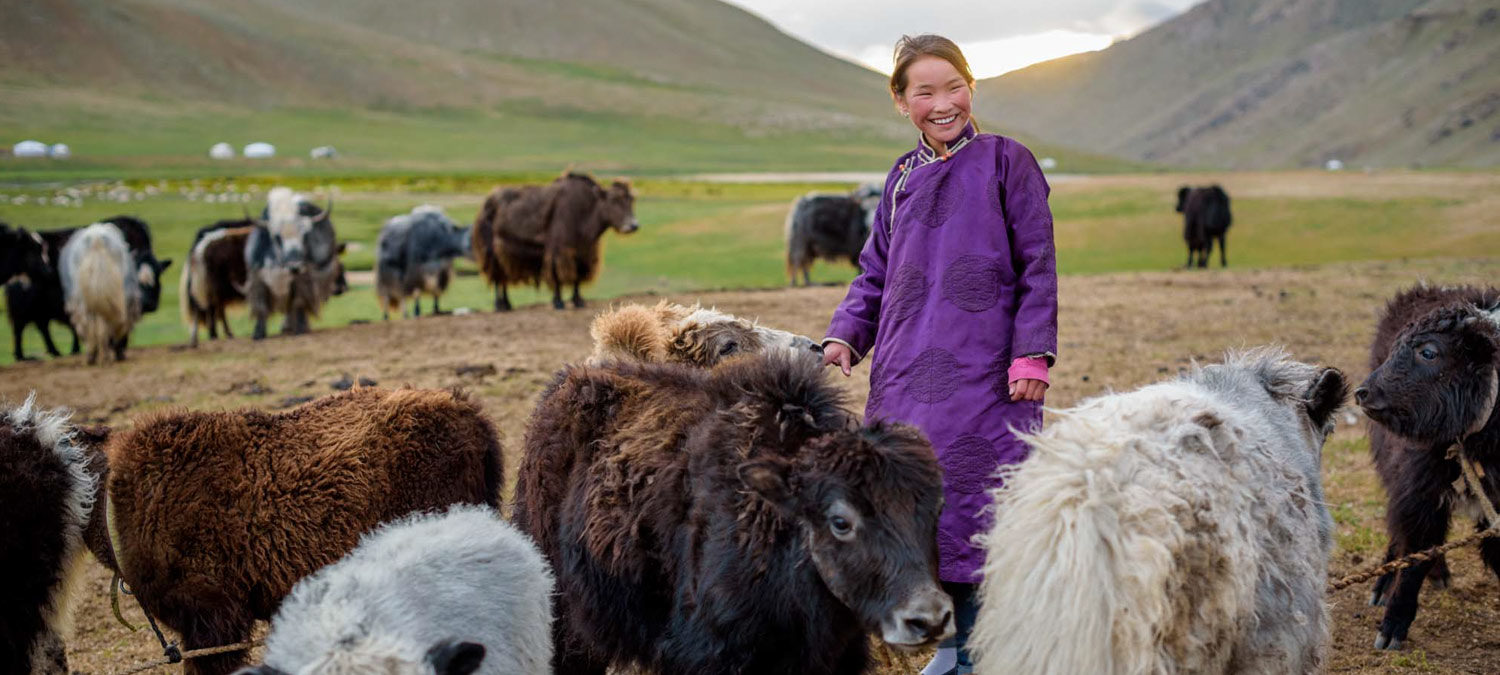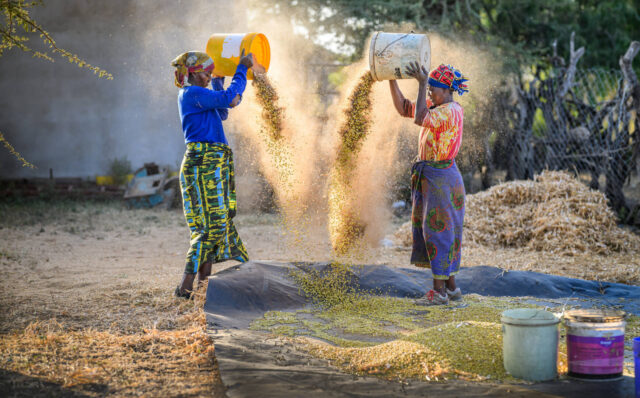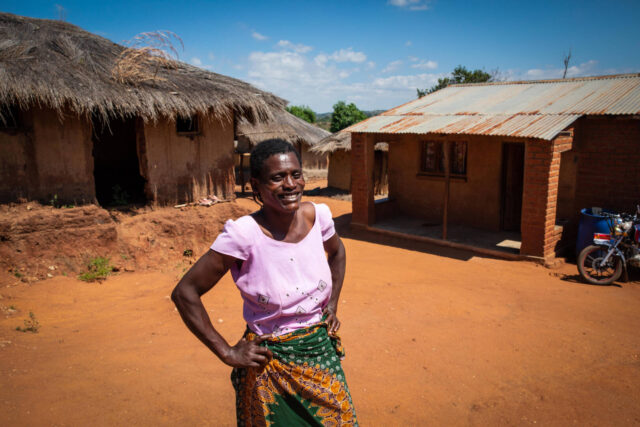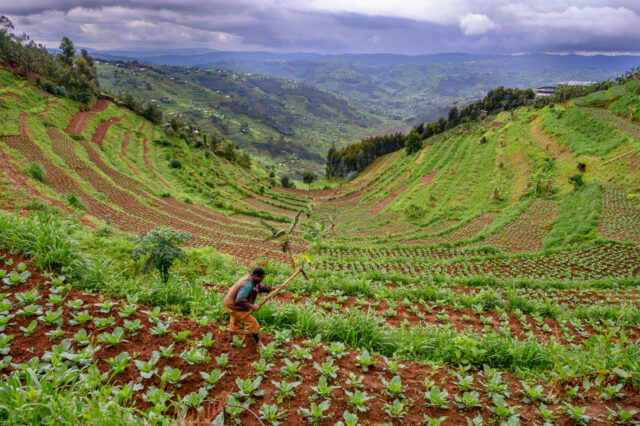Gift Catalog sheep help a semi-nomadic family of herders thrive in Mongolia’s magnificent yet sometimes harsh grasslands.
Dulamsuren enjoys a sweeping view from her favorite perch on a hillside overlooking the Valley of the Painting Pen.
The young girl walks among an ancient ruin, a circle of rocks called the Grave of the Heroes pre-dating the Mongolian empire. In the distance, a towering rock pile marks where Chinggis Khaan once kept a temporary outpost.
In the hills before her, animals graze serenely while hawks, eagles, and falcons circle above searching for prey like the Mongolian gerbil, which burrows below ground.
And across the meadow stand two gers, or yurts, where Dulamsuren’s mother and father, brother, and grandmother live as semi-nomadic herders.
Generations of Dulamsuren’s family have roamed the Valley of the Painting Pen in central Mongolia’s Bayankhongor province. Caring for hundreds of goats, sheep, yaks, and horses, the family moves four times a year, in concert with the seasons.
But the beauty and balance of the magnificent Mongolian steppe belie a looming, harsh reality: the zud, extreme Mongolian winters that can devastate millions of animals and drive herders off the plains and into the city and poverty.
Gifts that fight poverty and bring hope
World Vision has been working here since 1991 providing animals, medicine, food, and developing communities. Through the World Vision Gift Catalog and sponsors, World Vision Mongolia has become a major force in protecting children.
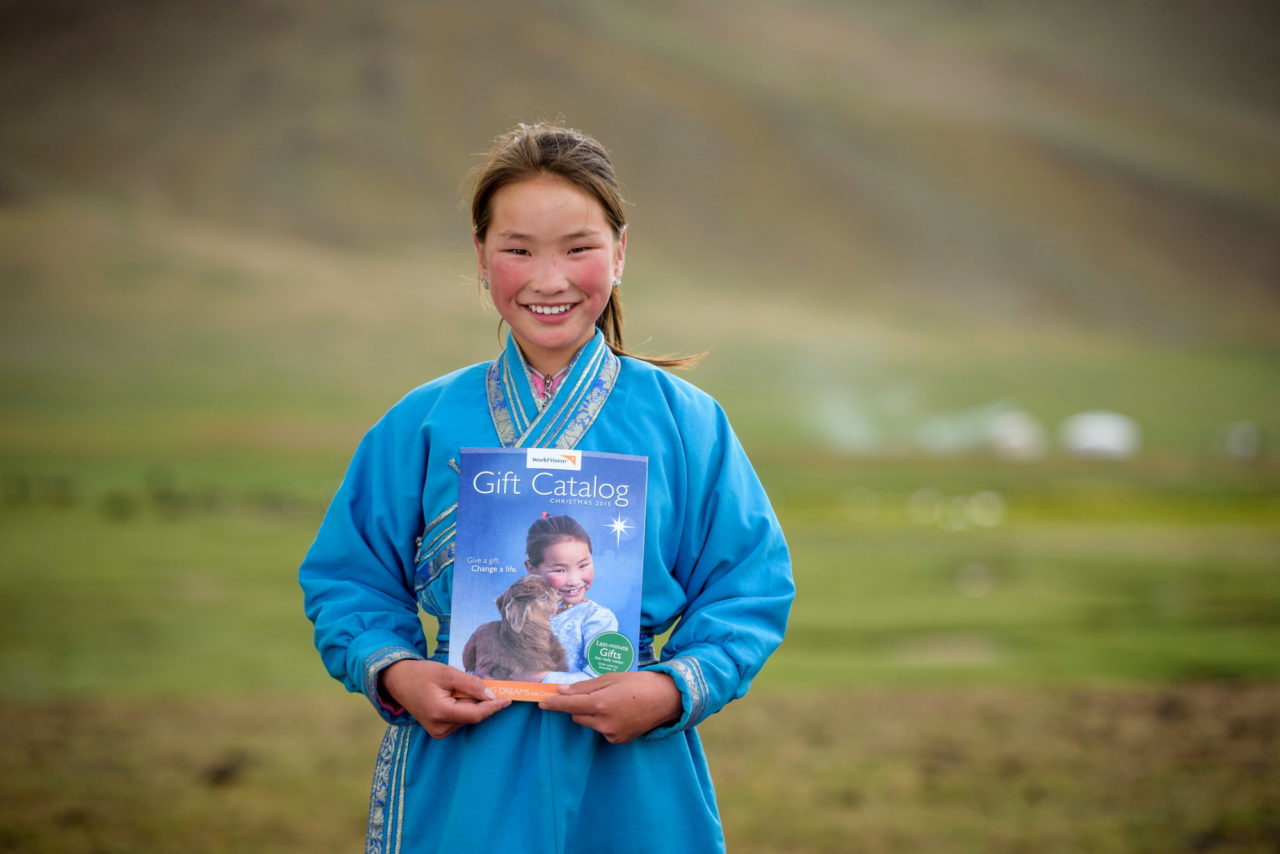
And through the Gift Catalog, donors can provide something uniquely Mongolian — a ger — the home and symbol of Mongolian nomads. In this beautiful, sometimes punishing, environment, the ger provides shelter against all manner of storms.
This holiday season, we’re profiling the two girls who grace the cover of the World Vision’s Gift Catalog: Chania, a bright and cheerful 5-year-old who lives in Burundi’s upcountry, and Dulamsuren, the daughter of a semi-nomadic herder in central Mongolia.
They could not come from more diverse countries. In Burundi, 10 million people squeeze into an area roughly the size of Maryland. Earlier this year, Mongolia celebrated reaching 3 million people spread throughout a country roughly the size of the western United States.
But the two girls share one thing: They represent the hopes and dreams of millions of children around the world for whom clean water, an education, goats and chickens, medicine, and safety from exploitation are the real gifts that lead to a fuller life.
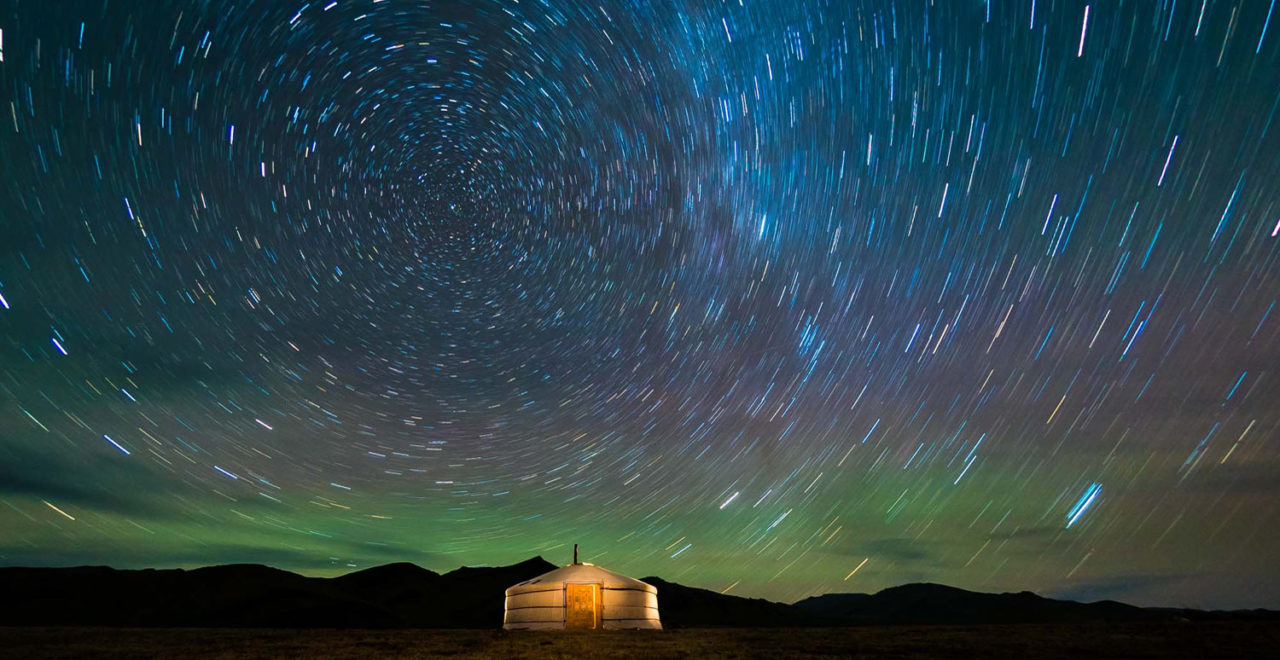
‘We wanted to do something, but we couldn’t do anything’
The sun rises across the valley, but Dulamsuren’s father, Boldbaatar, is eager to get going. He needs to get across the valley and over the mountains to start harvesting and putting aside hay for the winter.
It’s mid-August and warm, but the zud is on his mind. He needs to prepare now to make sure his animals, the source of Dulamsuren’s and his family’s income and well-being can make it through the winter.
“Zero means nothing to us,” says Togi Dorjpalam, communications specialist and translator for World Vision Mongolia.
It will have to get far colder to get Boldbaatar’s attention.
The last zud was in 2010, when daytime temperatures dropped to minus 40 degrees and deep snow blanketed the land. Unable to graze, an estimated 20% of Mongolia’s livestock — more than 8.5 million sheep, goats, horses, camels, and yaks — perished in the unrelenting cold.
During the winters of 2000 to 2002, Mongolia experienced three zuds in a row, killing nearly 11 million livestock.
Boldbaatar and his wife, Dolgorsuren, remember the winter of 2002.
“It was very difficult,” Dolgorsuren says, “I worried, how can we survive?”
The cold was taking its toll on their animals. The yaks, she said, started twisting their head to the side, a sign that she said showed they were near death. The snow was so deep they couldn’t move their animals.
“We wanted to do something, but couldn’t do anything,” she says.
Desperately, they dug into the snow to find grass for their animals.
She watched one morning as their animals huddled to keep warm. The next morning, she found them piled next to each other, dead.
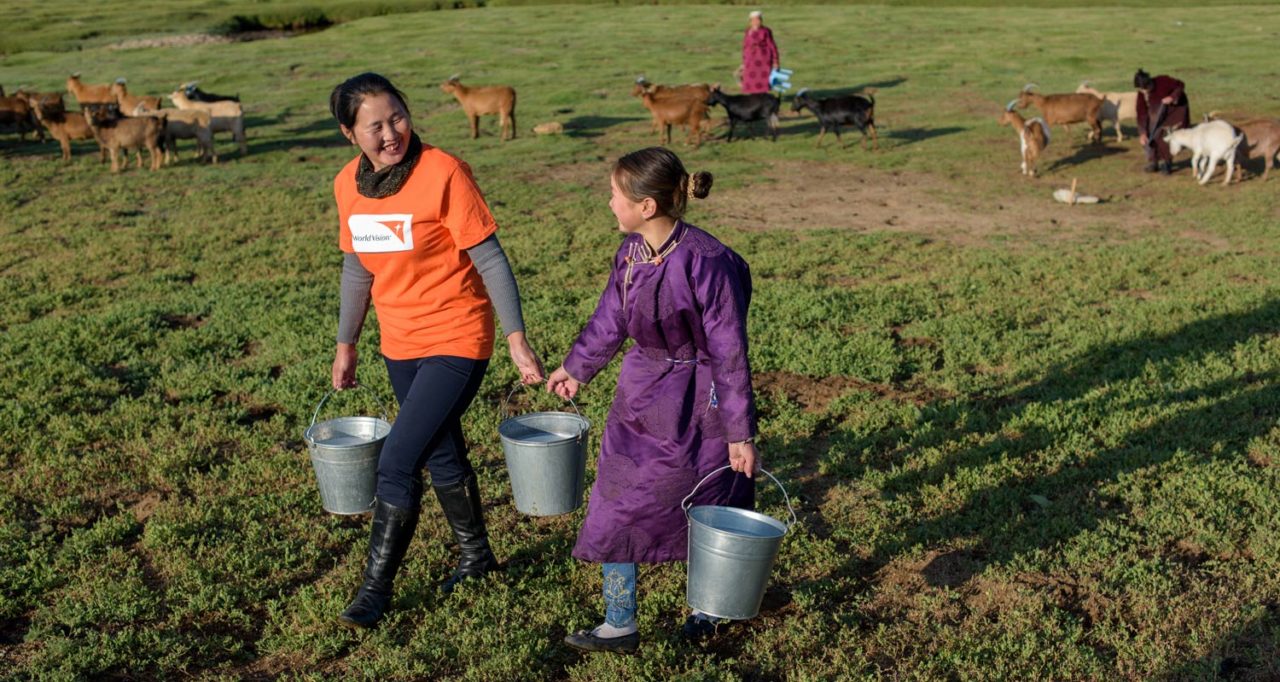
‘I wanted to do something for this family’
The 2002 zud decimated their herd down to 10 sheep and two yaks. Their income and wealth, measured by the number of animals they have, was wiped out.
They retreated to the nearby village of Ulziit. Unable to find work, they lived on state assistance provided for the children.
Several years later, they returned to the countryside to try to resume the nomadic life. They resettled in familiar ground, the far side of the Valley of the Painting Pen.
That’s where Nasanbayar, also known as Nasaa, in her first year as a World Vision staff member, found the family in 2009.
Working with local officials, she was surveying the area’s families in greatest need.
It was obvious Boldbaatar’s family was struggling: a lone sack of flour, a small amount of milk, and the most telling, only a few goats were outside. If the number of livestock is the measure of wealth, they were desperately poor.
But what broke her heart were the three children struggling in the home: Dulamsuren, her older sister, Byambaa, and most of all, her older brother, Baassanjav, who was born mute.
“I was really heartbroken to see this boy wanted to talk to me,” Nasaa says. “His mouth was moving, but he couldn’t say anything.”
The memory of meeting Dulamsuren and the sight of Baasanjav trying to talk still moves her today.
“I wanted to do something for this family,” she says, dabbing tearful eyes. “If I cannot help this boy, at least do something for this family. And give them something.”
That something came through the World Vision Gift Catalog. Nasaa was looking for good candidates who could benefit from a gift of sheep from the World Vision Gift Catalog.
Impressed by the family’s hard work ethic, they provided Boldbaatar and Dolgorsuren with 20 lambs.
“When I gave them lambs, I wished the weather would be good,” Nasaa says, because the fortune of so many rises and falls with the weather.
“If the weather temperature is good, then this area, this community, will enjoy an increase in their animals,” Nasaa says.
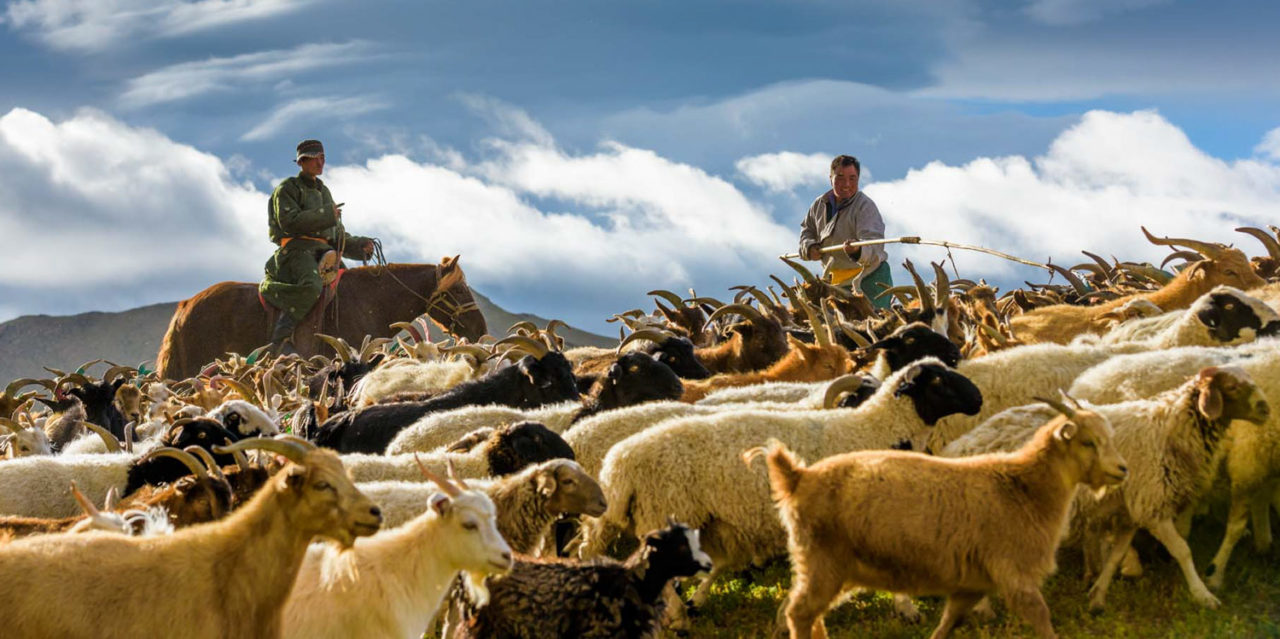
A new life with Gift Catalog sheep
Six years later, that original gift of 20 lambs has lifted Dulamsuren’s family from poverty. Boldbaatar and his son, Baasanjav, 23, watch and care for a herd of more than 300 goats and sheep, 20 yaks, and 12 horses.
Boldbaatar says that he hopes to grow his stable of horses and that he was able to re-gift 20 lambs back to World Vision.
The family lives off its herd by selling sheep wool or animals for slaughter. From goat and yak milk, Dolgorsuren makes aaruul, a hard, dried yogurt snack. When they need extra money, she will sell aaruul at the local market. The milk also is used to make creamy cheese and milk tea for the family.
Mornings begin with Boldbaatar tying goats together and then Dolgorsuren and Dulamsuren milking them. Afterward, the mother and daughter move onto milking the yaks. Dulamsuren’s job is to wrestle the young yak, roughly the size of small sofa, and hitch them to a line.
Her mom grabs a pail and milks the female yak, but when she goes dry, she moves to another. Dulamsuren releases its young yak, which heads immediately to its mother and suckles. After a while, Dulamsuren wrestles the young yak away and her mom goes back to milking the female yak.
Dulamsuren loves it and even has a favorite yak.
“Here we have fresh air,” Dulamsuren says, “beautiful nature, mountains, and river. It’s beautiful.”
Here, ancient ways and wisdom blend with ever-pressing technology.
As Dolgosuren walks to the ger with a pail of yak milk, she pauses, dips her fingers, and waves it skyward while turning in a circle — a gesture of thanks for all they have.
Their dwelling wrapped in felt and canvas is a construction style dating back to 400 B.C. It does not have electricity or indoor plumbing; water is collected three times a day from a nearby well. Dried yak dung is used as fuel for heat and cooking on a metal stove in the center of the ger.
Yet two solar panels sit atop the ger and a small satellite dish points skyward. Inside, a small television sits atop a cabinet. They get 80 channels, and their favorite show features the life of a Mongolian nomadic family.
A cellphone (though you have to drive over the mountains to get a signal), a van and a motorcycle, round out Boldbaatar’s conveniences.
But on the Mongolian steppe, neighbors and family are more dependable than things.
What’s Boldbaatar most proud of? “A wonderful wife and three children,” he says.
“I’m proud of having three children,” Dolgorsen says, “and I’m very proud of our first daughter (taking medical classes in Ulaanbaatar) and my youngest daughter who is being a star. She’s bringing us a good name, good fame for our family.”
She desperately wants to find a way for Baasanjav to speak. Even so, he’s accomplished on a horse, handy with the chores, and a valuable right-hand man to his father.
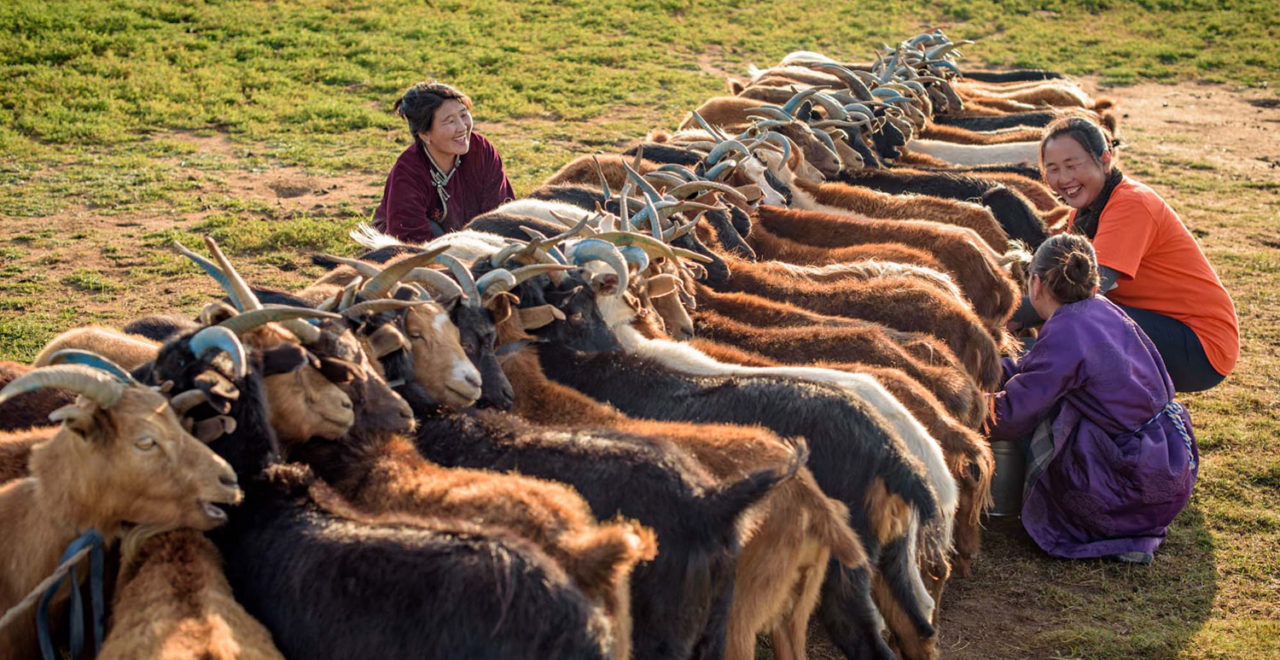
‘Without animals, I have no dreams’
As Boldbaatar prepares for winter, Dulamsuren is also preparing for school. During the winter, she will board in nearby Ulziit village and attend school away from her family.
She pages through a “dream book,” a scrapbook of certificates and pictures cut out from magazines.
She hopes to be a teacher one day, but her scrapbook has hints of other possibilities: second-place award in a language competition, second place in a singing competition.
When asked about her favorite song, she sings hauntingly, “My only mother in this world,” which speaks of being far away and coming home.
She understands that her ability to go to school was made possible through the gift of lambs — and that her life is on a dramatically different trajectory from the one that Nasaa found her in several years ago.
Today, big sister Nasaa is her mentor, and in turn, Dulamsuren will become a mentor to younger children in school this year. Her dreams, so far away in that ger years ago, are now taking shape.
“Without animals,” she says simply, “I have no dreams.”
